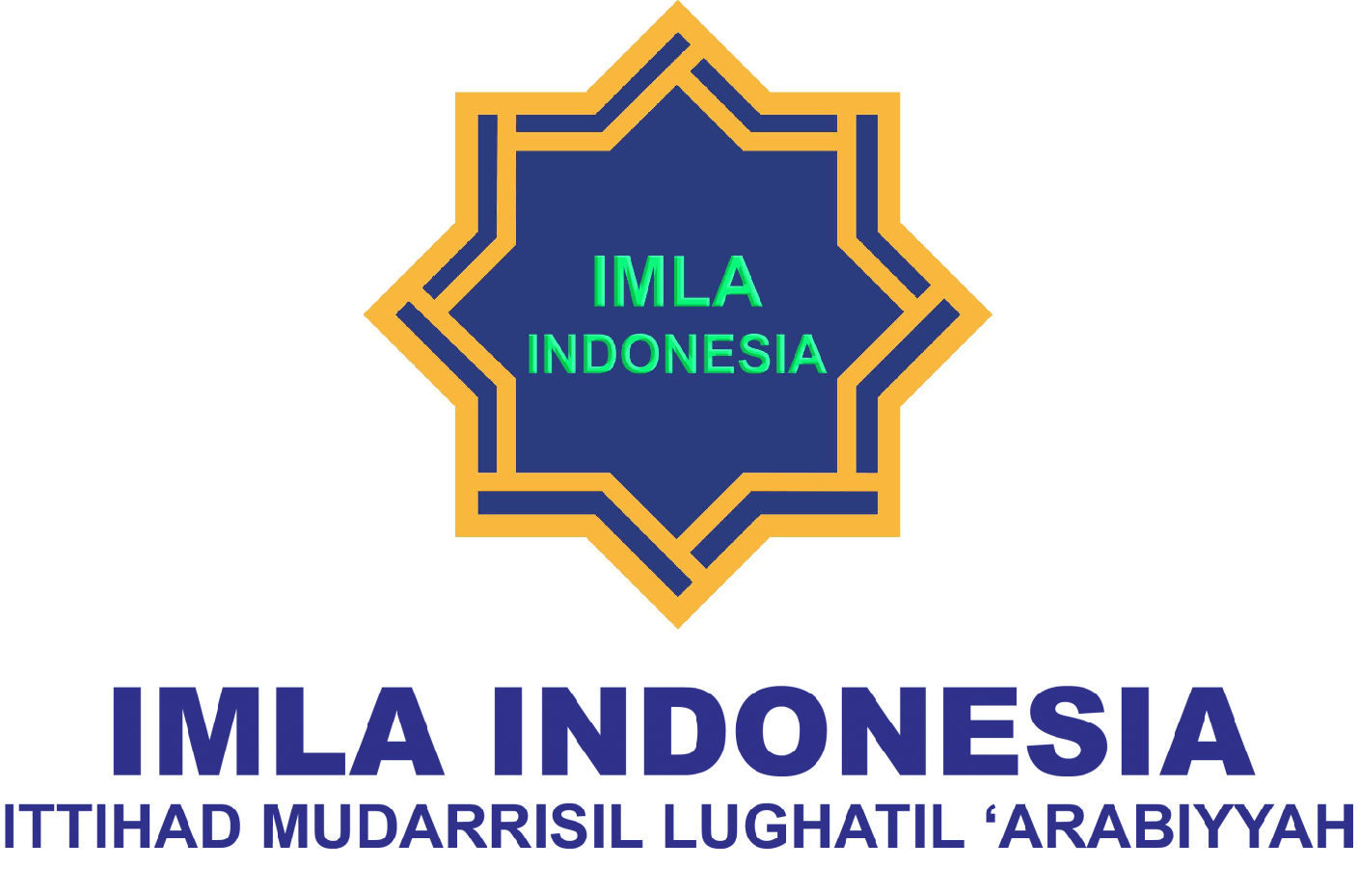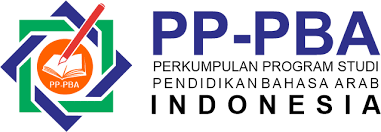Anwāʿu al-Naʿt wa Aghrāḍuhu fī Kitāb Durūs al-Lughah al-ʿArabiyyah li Imām Zarkashiy wa Imām Syubbāniy
DOI:
https://doi.org/10.30983/huruf.v4i1.7636Keywords:
Darussalam Gontor Islamic Boarding School, Learning of Nahwu, an-Na'tu, Durusul Lughoh al-ArabiyahAbstract
The book "Durusul Lughoh al-Arabiyah" is an Arabic learning book that is used widely in Indonesia, especially in Pesantren Modern. There are many discourses on Morphology (Nahwu) in this book that is interesting to be seen deeply. One of these discourses is an-na’tu. This article wants to analyze the various kinds of an-Na'tu and their objectives in the book "Durusul Lughoh al-Arabiyah" juz 1 written by Imam Zarkasyi and Imam Syubbani. The objectives of this research are: To know the sentences in which there are an-Na'tu in the book "Durusul Lughoh al-Arabiyah", and to know the kinds of an-Na'tu and their purpose in that book. Researchers used qualitative research with descriptive methods. To get the data, Researchers used documentation as well as using content analysis to analyze the data. The results obtained by the researcher are: 1) the sentences in which there are an-Na'tu in the book "Durusul Lughoh al-Arabiyah" there are 286 sentences. 2) The types are an-Na'tu al-haqiqi al-mufrod 266 sentences, an-Na'tu al-haqiqi al-jumlah al-ismiyah 13 sentences, and an-Na'tu al-haqiqi syibhu al-jumlah 7 sentences. From this result, perhaps this article will be one of the resources to explore the discourses of Morphology (Nahwu) in this book.
References
al-ʿAzīz, Khālid ʿAbd, al-Naḥw al-Taṭbīqiy, (Miṣr: Dār al-Lu'lu'ah, 2018)
Alif Cahya, Setiyadi, and Ummu Sa’adah, ‘Tammām Hassān Wa Ārāuhu Ḥaula Tajdīd An-Naḥwi (Dirāsah Waṣfiyyah Taḥlīliyyah Fī Kitābihi Al-Lugah Al-‘Arabiyyah Ma’Nāhā Wa Mabnāhā)’, LISANUDHAD, 6.2 (2019), 128–46 <https://doi.org/10.21111/LISANUDHAD.V6I2.3533>
Ardiansyah, Ade Arip, and Aji Abdul Aziz, ‘Taisīr An-Naḥwi al Ta’līmī Lī Garḍ Qirāati An-Nuṣūṣ Al-‘Arabiyyah Gair al-Masykūlah’, LISANUDHAD, 6.2 (2019), 86–110 <https://doi.org/10.21111/LISANUDHAD.V6I2.3478>
Bābtiy, ʿAzīzah Fawāl, al-Muʿjam al-Mufaṣṣal fi al-Naḥw al-ʿArabiy, (Bairūt: Dār al-Kutub al-ʿIlmiyyah, 1992)
Barakāt, Ibrāhīm Ibrāhīm, al-Naḥw al-ʿArabiy, (Miṣr: Dār al-Nashr lil Jāmiʿāt, 2007)
Duwaiduriy, Rajā' Waḥīd, al-Baḥth al-ʿIlmiy Asāsiyah al-Naẓariyyah wa Mumārasatuhā al-ʿIlmiyyah, (Bairūt: Dār al-Fikr al-Muʿāṣir, 2000)
al-Faḍliy, 'Abd al-Hādiy, Mukhtaṣar al-Naḥw, (al-Mamlakah al-ʿArabiyyah al-Suʿūdiyyah: Dār al-Shurūq, 1980)
Fayāḍ, Sulaimān, al-Naḥw al-ʿAṣriy Dalīl Mubassaṭ li Qawāʿid al-Lughah al-ʿArabiyyah, (Makaz al-Ahrām)
al-Ghulayayniy, Muṣṭafa, Jāmi' al-Durūs al-ʿArabiyyah, (Bairūt, Lubnān: Dār al-Fikr, 2007)
Hamzah, Amir, Metode Penelitian Kepustakaan Library Research Kajian Filosofis, Aplikasi Proses, Dan Hasil Penelitian (Malang: Literasi Nusantara, 2020)
al-Hāshimiy, Aḥmad, al-Qawāʿid al-Asāsiyyah lil Lughah al-ʿArabiyyah, (Bairūt: Dār al-Kutub al-ʿIlmiyyah, 1354)
al-Hashimiy, Muḥammad, al-Tauḍiīḥāt al-Jaliyyah fī Sharh al-Ajrūmiyyah, (al-Kuwait: Dār al-Ẓāhirah lil Nashr wa al-Tauzī', 2011)
al-Laṭīf, Aḥmad Mukhtār ʿUmar wa Muṣṭafa al-Nuḥās Zahran wa Muḥammad Ḥamāsah ʿAbd, al-Naḥw al-Asāsiy, (Kuwait: Dār al-Salāsil, 1994)
al-Laṭīf, Muḥammad Ḥamāsah ʿAbd, al-Tawābiʿ fī al-Jumlah al-ʿArabiyyah, (al-Qāhirah: Maktabah al-Zahrā', 1991)
Mughālasah, Maḥmūd Ḥusny, al-Naḥw al-Shafiy, (Bairūt: Muassasah al-Risālah, 1997)
Muhyiddin, Luthfi, and Hazrati Zharfa, ‘The Implementation of Jigsaw Strategy to Improve Students’ Active Participation in Learning of Tarjamah, Class of Grade 4 KMI at Third Campus of Darussalam Gontor Islamic Boarding School Academic Year: 1438-1439 H’, LISANUDHAD, 5.1 (2018), 107 <https://doi.org/10.21111/lisanudhad.v5i1.2386>
Muriyatmoko, Dihin, Faisal Reza Pradhana, and Zaenury Adhiim Musyafa’, ‘Durus Al-Lughah Gontory: Media Pembelajaran Bahasa Arab Untuk Pemula Menggunakan Metode Langsung’, 6.1 (2019), 77–84 <https://doi.org/10.25126/jtiik.201961259>
Nahār, Nāyif bin, Muqaddimah fī ʿIlm al-Naḥw, (Qaṭr: Muassasah Waʿy li al-Dirāsāt wa al abḥāth, 2016)
Najīb, Muḥammad Samīr, Muʿjam al-Muṣṭalḥāt al Naḥwiyyah wa al-Ṣarfiyyah, (Bairūt: Muassasah al-Risālah, 1985)
al-Niʿmah, Mazīdah, al-Naʿtu wa Aghrāduhu fi al-Nuẓum "al-Gharīdah al-Bahiyyah" lil Shaikh Aḥmad bin Muḥammad al-ʿAdwiy, (Jāmiʿah Sunan Ampel al-Islāmiyyah al-Ḥukūmiyyah, 2017)
al-Qādir, ʿAbd, Manhaj al-Baḥthi al-ʿIlmiy wa Kitābsh al-Rasā'il al-Jāmiʿiyyah, (al-Riyāḍ: Dār al-Tauḥīd lil Nashr. 2011)
Salam, Mahdi Wahyuni, ‘خصائص اللغة العربية الفصحي ومميزتها’, Arabiyya: Jurnal Studi Bahasa Arab, 9.1 (2020), 1–14
Suryadarma, Yoke, and Ibnu Fitriyanto, ‘Taṭbīq Al-Manhaj Al-Dirāsi Fi Ta’līm Al-Lugah Al-Arabiyyah Li Al-Daurah Al-Mukaṡṡaf Bi Markaz Al-Daurāt Wa Al-Tadribāt Jāmi’ah Dār Al-Salam Gontor.Pdf’, ALSINATUNA Journal of Arabic Linguistics and Education, 5.1 (2019), 72–87 <https://doi.org/10.28918/alsinatuna.v5i1.2467>
Suryadarma, Yoke, and Gamal Abdul Nasir Zakaria, ‘Korpus Arab Pesantren: Digitizing the work of Arabic non-Arabic speakers at Modern Islamic Institution Darussalam Gontor’, At-Ta’dib, 17.1 (2022), 52–66 <https://doi.org/10.21111/at-tadib.v17i1.7067>
Yolanda, Fidela Devi, Telaah Pustaka (Mantingan, 2021)
Downloads
Published
Issue
Section
Citation Check
License
Copyright (c) 2024 Yoke Suryadarma, Mandrasi Amira Saidah, Fidela Devi Yolanda

This work is licensed under a Creative Commons Attribution-ShareAlike 4.0 International License.
Authors who publish with this journal agree to the following terms:
- Authors retain copyright and grant the journal right of first publication with the work simultaneously licensed under a Creative Commons Attribution-ShareAlike 4.0 International Licensethat allows others to share the work with an acknowledgment of the work's authorship and initial publication in this journal.
- Authors are able to enter into separate, additional contractual arrangements for the non-exclusive distribution of the journal's published version of the work (e.g., post it to an institutional repository or publish it in a book), with an acknowledgment of its initial publication in this journal.
- Authors are permitted and encouraged to post their work online (e.g., in institutional repositories or on their website) prior to and during the submission process, as it can lead to productive exchanges, as well as earlier and greater citation of published work (See The Effect of Open Access).










